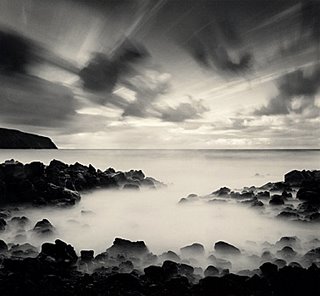Steve Harper
Steve Harper taught the world's first college-level course on night photography. This was at the Academy of Art College in San Francisco in 1979. This course formed the basis for the current community of night photographers in San Francisco, including photographers such as Tim Baskerville, Lance Keimig and Tom Paiva (although, Lance and Tom have since moved to Boston and LA, respectively).
-from "Night Light, Five Visions", Steve Harper, 1981
Many of today's digitial night photographers might not appreciate why an art college would even need a course on night photography. But keep in mind that back in the 1970's, when we were all shooting on film, night photography presented a number of technical hurdles that had never been sytematically studied (in particular, reciprocity). One of Steve's primary objectives in those early courses was to begin with an educated guess at correct film selection, exposure and development time, and then experiment to determine the best processes to practice night photography.
I met Steve Harper at one of his last public appearances at The Nocturnes night photography workshop back in 2002. I arrived about 20 minutes early for the workshop because I had to drive up from San Jose. Steve arrived a few minutes later, and we hung out and talked for about fifteen minutes.
Within the next few months, I will be filming an interview with Steve Harper, conducted by Tim Baskerville, for the next version of my night photography documentary film "The Night of the Living Photographers". We plan to preview the new material at the Mono Lake Night Photography Workshop in August.
In case you missed it, here is Steve's new website.










